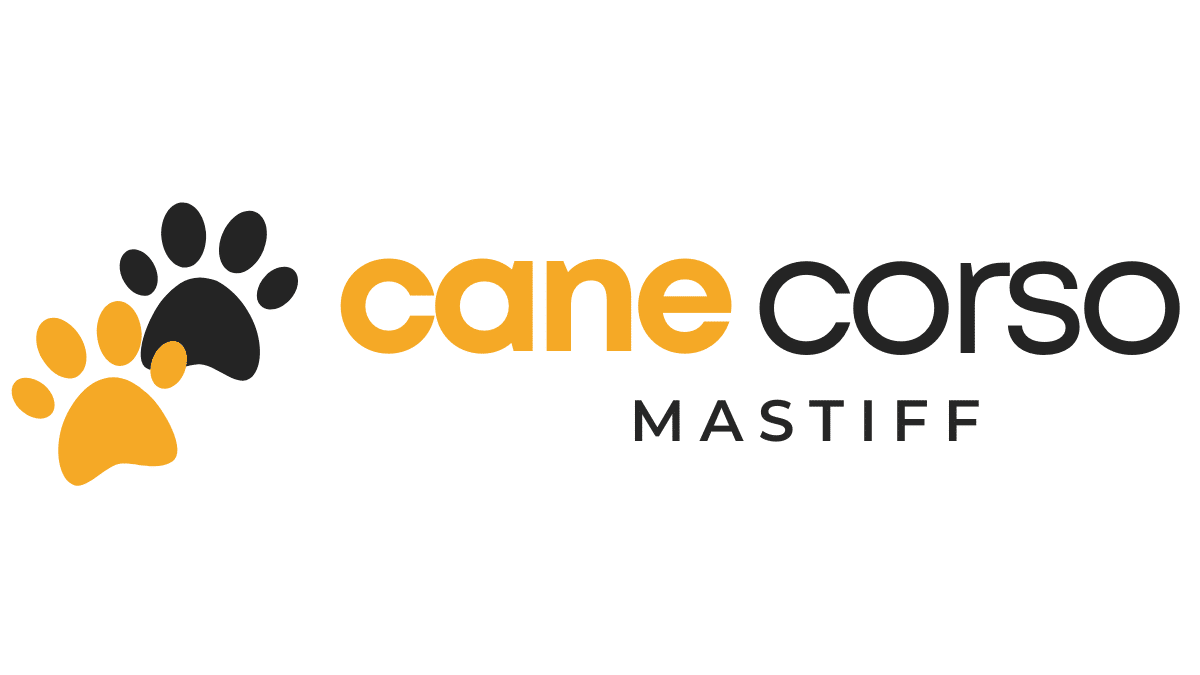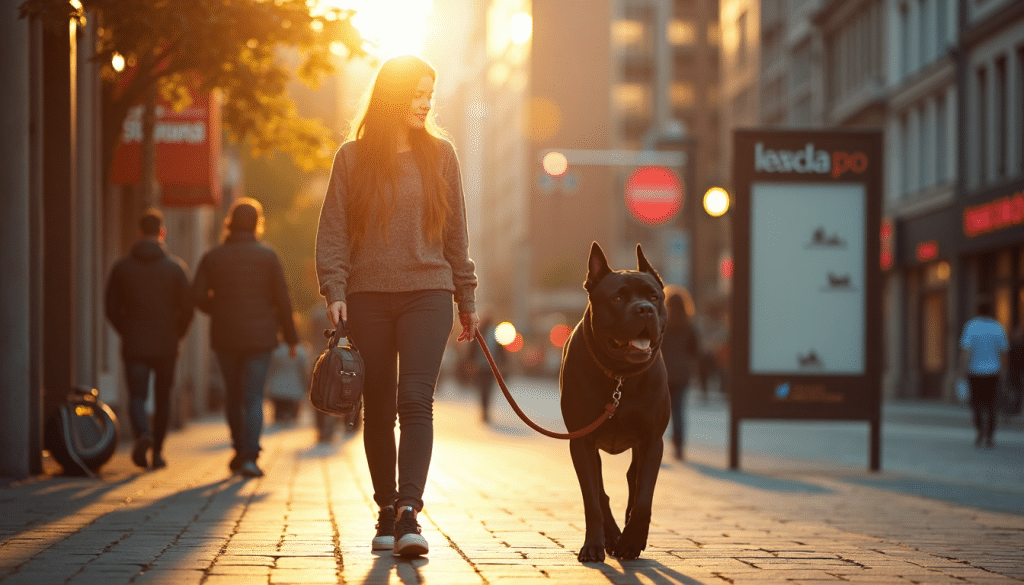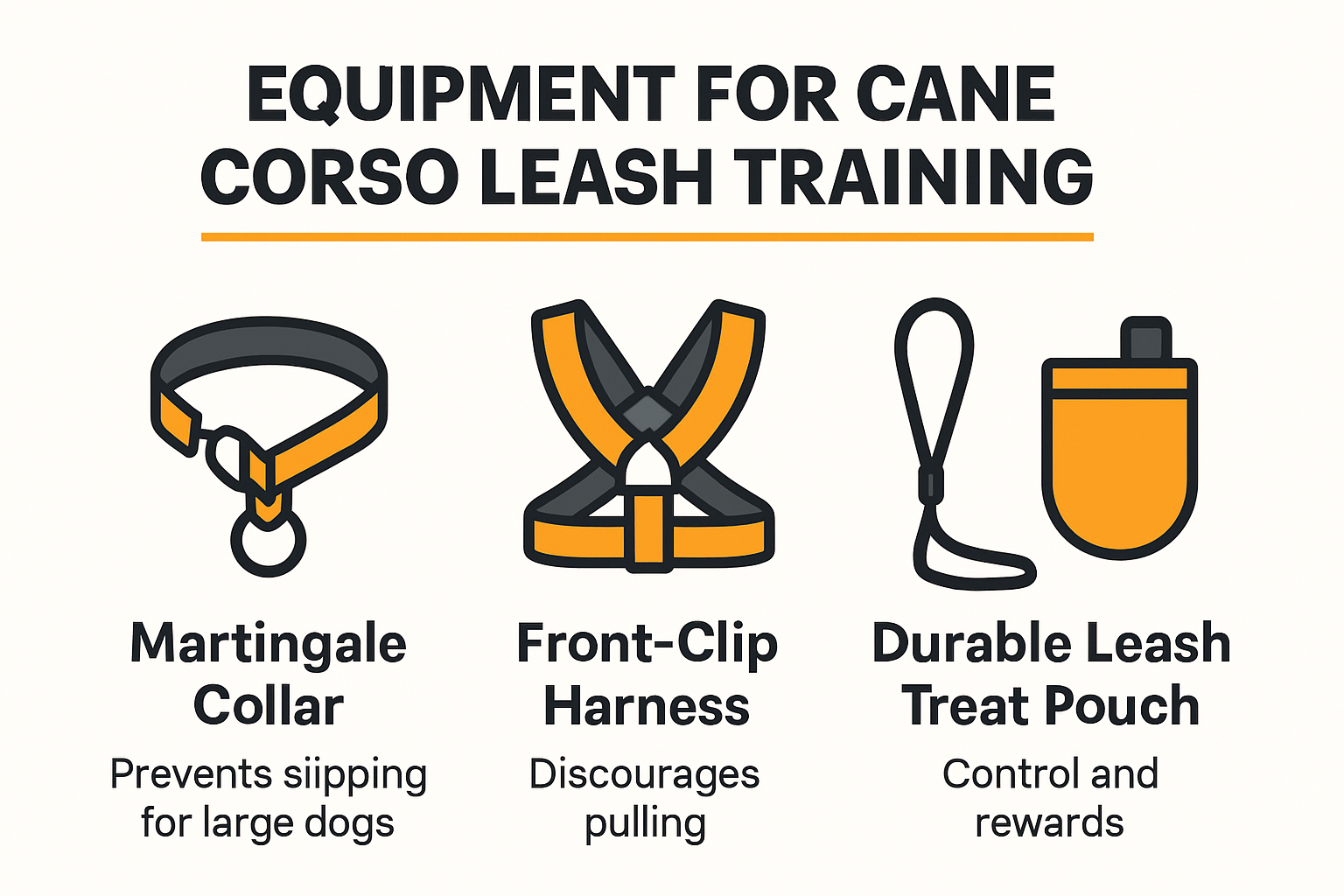Teaching a Cane Corso to walk calmly on a leash is no easy task. This breed can weigh over 100 pounds fully grown and has powerful instincts that put even experienced owners to the test. Yet here’s the surprise. Most people assume the secret to good leash manners is in the collar or harness. The reality is that the real breakthrough comes from understanding your dog’s unique triggers and consistent, positive reinforcement—not just what gear you buy.
Table of Contents
- Understanding Cane Corso Leash Behavior
- Essential Tools For Leash Training Success
- Step-By-Step Cane Corso Leash Training Methods
- Troubleshooting Common Leash Training Problems
Quick Summary
| Takeaway | Explanation |
|---|---|
| Understand Behavioral Triggers | Recognize that a Cane Corso’s leash reactivity can stem from factors like stress or environmental stimuli. Identifying triggers enables tailored training approaches. |
| Utilize Specialized Equipment | Invest in appropriate collars and harnesses, like martingale collars and front-clip harnesses, which are designed to provide better control during walks, minimizing pulling. |
| Implement Positive Reinforcement | Use reward-based training methods, such as treats and praise, to encourage calm walking behavior. This technique reinforces desired behaviors through positive association. |
| Maintain Consistent Training | Regular, consistent practice while gradually increasing complexity during walks helps solidify training results and enhances the dog-owner bond. |
| Adapt to Individual Needs | Recognize that each Cane Corso is unique; adjust training methods based on individual temperament and learning pace for effective leash training. |
Understanding Cane Corso Leash Behavior
Leash behavior is a critical aspect of training for Cane Corsos, a powerful and intelligent breed that requires consistent and strategic approach to walking management. These large mastiffs possess strong instincts and can become challenging to control without proper training, making early understanding of their leash behavior fundamental to successful walks and overall obedience.
The Psychological Foundations of Leash Reactivity
Cane Corsos are naturally protective dogs with a deep-rooted guarding instinct. Learn more about breed-specific behavior management to understand their unique psychological profile. When on a leash, these dogs can experience heightened stress and territorial responses, which manifest as pulling, lunging, or reactive behaviors toward other dogs or perceived threats.
Research indicates that younger dogs typically display more excitable behaviors during leash walking. According to behavioral studies, dogs under two years old are more likely to exhibit jumping, pulling, and unpredictable movements while harnessed. This energetic phase requires patient and consistent training to establish proper walking etiquette.
Factors Influencing Leash Behavior
Multiple factors contribute to a Cane Corso’s leash behavior. Genetic predisposition, early socialization, individual temperament, and previous training experiences all play significant roles. Dogs that demonstrate more relaxed behavior during initial behavioral assessments tend to exhibit less tension and pulling during walks.
Environmental stimuli dramatically impact leash behavior. Unfamiliar sounds, other animals, or sudden movements can trigger a Cane Corso’s protective instincts. Scientific research suggests that dogs with comprehensive socialization and controlled exposure to various scenarios develop better leash manners.
Understanding these behavioral nuances is crucial. A Cane Corso’s leash behavior is not just about physical control but about establishing a communication channel between dog and handler. By recognizing potential triggers and implementing strategic training techniques, owners can transform challenging walks into enjoyable, controlled experiences that strengthen the human-canine bond.
The key is patience, consistency, and a deep understanding of the breed’s unique psychological landscape. Each walk becomes an opportunity for training, reinforcing positive behaviors, and building mutual trust and respect.
Essential Tools for Leash Training Success
Successful Cane Corso leash training requires strategic equipment selection and understanding of specialized tools designed to manage this powerful breed’s unique training needs. The right tools can transform challenging walks into controlled, enjoyable experiences that reinforce positive behavior and strengthen the bond between handler and dog.
Specialized Collars and Harnesses
Choosing the appropriate walking equipment is crucial for effective leash training. Explore advanced training techniques to complement your equipment selection. Professionals recommend specific gear tailored to large, strong breeds like the Cane Corso.
Martingale collars provide an excellent solution for leash training. According to professional dog trainers, these collars prevent dogs from slipping out while offering gentler control compared to traditional buckle collars. They distribute pressure more evenly around the neck, reducing the risk of injury while maintaining effective control.
Front-clip harnesses represent another critical tool for managing powerful dogs. Research from canine behavior specialists indicates that these harnesses redirect a dog’s forward motion, significantly reducing pulling behaviors. The front-clip design allows handlers to guide the dog’s movement more effectively, making walks more manageable and comfortable for both dog and owner.
Advanced Control Devices
Head halters offer an advanced solution for controlling strong-willed Cane Corsos. Clinical research demonstrates that these devices provide exceptional control by guiding the dog’s head, which naturally influences body direction. Brands like Gentle Leader and Halti have proven particularly effective for large breeds with persistent pulling tendencies.
Additional essential tools include high-quality, non-retractable leashes typically 4-6 feet in length. These provide optimal control while allowing sufficient movement for the dog. Trainers recommend using durable materials like nylon or leather that can withstand the strength of a Cane Corso.
Treat pouches and clickers complement physical control tools, enabling positive reinforcement techniques. By combining appropriate gear with consistent training methods, owners can effectively manage their Cane Corso’s leash behavior. The right tools transform walking from a potential struggle into an opportunity for bonding and skill development.
Remember that no single tool guarantees success. Each Cane Corso is unique, requiring patient adaptation and a personalized approach to leash training. Consistent practice, positive reinforcement, and understanding your dog’s individual needs remain the most critical elements of successful leash training.
Here is a comparison table summarizing the main leash training tools mentioned in the article, including their advantages and typical usage:
| Tool | Purpose/Use | Key Advantage | Best For |
|---|---|---|---|
| Martingale Collar | Prevents escaping, provides gentle control | Even pressure distribution, safer neck | Dogs prone to slipping out |
| Front-Clip Harness | Reduces pulling, guides movement | Redirects forward motion, less pulling | Pullers/strong walkers |
| Head Halter | Guides dog’s head and body direction | Maximum control over head and body | Persistent pullers |
| Standard Leash (4-6ft) | Day-to-day walking, maintains proximity | Strong control, durable | Daily walks |
| Treat Pouch/Clicker | Delivers rewards and positive reinforcement | Enables quick, consistent rewards | All training scenarios |
Step-by-Step Cane Corso Leash Training Methods
Leash training a Cane Corso requires a methodical, patient approach that acknowledges the breed’s powerful physique and intelligent nature. Discover comprehensive training strategies to set a strong foundation for successful leash work. The goal is to transform walking from a potential struggle into a coordinated, enjoyable experience for both dog and handler.
Initial Leash Introduction and Familiarization
According to professional trainers, the first step in leash training involves creating positive associations with walking equipment. Begin by allowing your Cane Corso to become familiar with the harness and leash indoors. Let them wear these items during playtime or while receiving treats, helping to reduce anxiety and build comfort.
Start with short, controlled indoor sessions. Place the harness on your dog for brief periods, immediately following with play or high-value treats. This technique helps your Cane Corso view the leash as a signal for positive experiences rather than a restrictive tool. Gradually increase the duration of these indoor sessions, always maintaining a calm and encouraging environment.
Fundamental Walking Techniques
Research from canine behavior experts emphasizes the importance of positive reinforcement during leash training. Implement the ‘Stop and Go’ method to discourage pulling. When your Cane Corso begins to pull, immediately stop walking and wait until they return to your side. Reward this behavior with treats and praise, teaching them that walking calmly beside you leads to forward movement and rewards.
According to training specialists, consistency is key. Practice these techniques in progressively more challenging environments. Start in a quiet, distraction-free area and slowly introduce more complex settings. Use high-value treats and maintain a short, controlled leash to guide your dog’s movement.
Advanced Leash Control and Refinement
As your Cane Corso becomes more proficient, introduce more advanced training techniques. Practice heel commands, teaching your dog to walk directly beside you with minimal deviation. Use verbal cues and hand signals to communicate desired walking behavior. Gradually reduce treat frequency, replacing food rewards with verbal praise and physical affection.
Remember that each Cane Corso is unique. Some dogs may learn quickly, while others require extended patience and practice. Pay attention to your dog’s individual temperament and adjust your training approach accordingly. The key is maintaining a consistent, positive training environment that builds trust and reinforces desired behaviors.
Leash training is more than a technical skill. It’s an opportunity to strengthen the bond between you and your Cane Corso, establishing clear communication and mutual respect. With dedication, patience, and the right techniques, you can transform leash walking from a challenging task to an enjoyable shared experience.
The following table breaks down the step-by-step leash training methods for Cane Corsos, summarizing each phase and its primary focus:
| Training Step | Main Focus | Key Techniques/Approach |
|---|---|---|
| Leash Introduction & Familiarization | Build positive association with equipment | Use treats/play indoors, short sessions |
| Fundamental Walking Techniques | Discourage pulling, build calm walking habits | Stop & Go method, consistent rewards |
| Advanced Control & Refinement | Achieve precise control, minimize treat reliance | Heel training, verbal/hand cues, praise |
Troubleshooting Common Leash Training Problems
Leash training a Cane Corso presents unique challenges that require strategic intervention and understanding. Learn about advanced training techniques to address potential roadblocks effectively. These powerful dogs demand a nuanced approach to overcome common behavioral issues during leash training.
Identifying Leash Reactivity Triggers
According to professional trainers, inconsistent training can significantly contribute to leash-related behavioral problems. Cane Corsos are particularly sensitive to environmental stimuli, which can trigger reactive behaviors. Identifying specific triggers is crucial for developing a targeted training strategy.
Common triggers include other dogs, unfamiliar people, loud noises, and sudden movements. Observe your dog’s body language carefully. Look for signs of tension such as raised hackles, stiff posture, or focused staring. These indicators help you anticipate and manage potential reactive episodes before they escalate.
Addressing Persistent Pulling Behaviors
Research from canine behavior experts highlights that pulling is often a result of inadequate training or excess energy. Cane Corsos are powerful dogs with strong instincts, making leash control particularly challenging. Implement a comprehensive approach to reduce pulling:
- Use front-clip harnesses to redirect pulling motion
- Practice consistent stop-and-go techniques
- Reward calm walking behavior with high-value treats
- Gradually increase walk complexity and duration
Consistent positive reinforcement is key. When your dog walks calmly beside you, immediately reward them with treats and praise. This creates a positive association with controlled walking and reinforces desired behavior.
Advanced Problem-Solving Strategies
For more complex leash training challenges, a multilayered approach is essential. Professional trainers recommend addressing underlying issues such as anxiety, excess energy, or lack of socialization. Consider additional training techniques like:
- Controlled socialization in low-stress environments
- Short, frequent training sessions
- Mental stimulation exercises to reduce overall anxiety
Potential setbacks are normal in leash training. Experts emphasize the importance of maintaining a consistent, patient approach. Avoid punishment-based methods, as these can increase anxiety and potentially worsen leash behavior.
Remember that each Cane Corso is an individual. What works for one dog may not work perfectly for another. Patience, consistency, and a willingness to adapt your approach are crucial. If persistent problems arise, consider consulting a professional dog trainer specializing in large breed training.
Ultimately, successful leash training is about building a strong, trusting relationship with your Cane Corso. Approach challenges with empathy, understanding, and a commitment to positive reinforcement. With time and dedicated effort, you can transform leash walking from a struggle into an enjoyable bonding experience.
Frequently Asked Questions
What is the best way to train a Cane Corso to walk calmly on a leash?
How can I address pulling behavior in my Cane Corso during walks?
What tools are essential for effective Cane Corso leash training?
How do I identify my Cane Corso's leash reactivity triggers?
Unlock Calm Walks With Expert Cane Corso Leash Guidance
Struggling with a powerful Cane Corso who insists on pulling or reacting on every walk? This guide highlights just how overwhelming it can feel to manage leash training for a large breed known for its strong instincts. You want leash confidence and a better bond, not challenging outings or daily frustration. If you are looking for ongoing support, trusted methods, and a community that truly understands Cane Corsos, you do not have to train alone. Discover solutions that match the breed’s intelligence and strength by visiting our Cane Corso training archive.
Join our Cane Corso Mastiff community today and access proven training resources, essential care tips, and real stories from fellow Cane Corso owners. For a comprehensive approach beyond leash work, explore our Training and Behavior section or start your journey at Cane Corso Mastiff. Begin building the partnership and peace of mind you have been searching for on your very next walk.
Recommended
- Comprehensive How-To – Training Your Cane Corso For Obedience Success – Cane Corso Mastiff
- Master Cane Corso Obedience: Training Guide for New Owners
- Common Training Mistakes Cane Corso Owners Should Avoid – Cane Corso Mastiff
- Cane Corso Obedience Training: Master Control
- Overcome Cane Corso Training Challenges Effectively
- Cane Corso Training and Behavior – Cane Corso Mastiff




